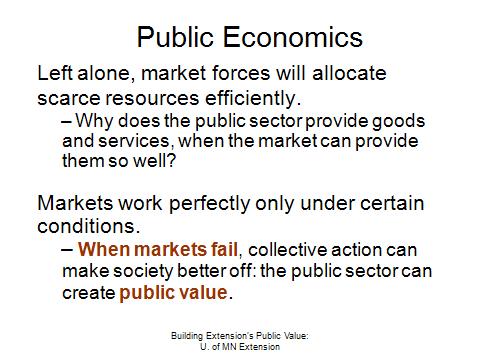Are we disoriented about Extension’s assets?
Module 7 of the Building Extension’s Public Value workshop leads participants to answer the question “Why Extension?”–that is, why should Cooperative Extension, and not some other public or private entity, develop and deliver outreach education programs? We answer the question by listing the people and organizations that are perceived to deliver programs that are similar to what Extension does, and naming Extension’s strengths relative to those alternative providers. The result is a type of asset inventory: a list of the qualities that make Extension a preferred source for programming or the assets that we bring to the table when we engage in partnerships. The inventory usually includes Extension’s trained educators, research-based curricula, local knowledge, statewide and national networks, and connection to the land-grant university.
It can be affirming for Extension professionals to assemble this asset inventory and see the organization’s strengths. However, the exercise also gives us an opportunity for transformative learning through a disorienting dilemma, an idea from Jack Mezirow that I learned from Nancy Franz and wrote about in these blog entries.The fact is, we can only use our list of Extension’s strengths to make our case for Extension funding if the items on the list are true. In the “Why Extension?” exercise, I challenge participants to think about whether their organization really does ensure that educators are using the best teaching methods, curricula are based on current research and local knowledge, and connections to the university and to key networks are maintained. Inevitably, I hear participants share that for their organization, there is frankly room for improvement in at least some of these areas.
I think this challenge can create a disorienting dilemma for some participants: they have been asked to switch from admiring their organization’s strengths to recognizing some of its weaknesses. I suggest that the way out of the dilemma is to see the asset inventory as a list of possible investments that Extension administrators can make to shore up Extension’s strengths. Investing in our strengths can help us make Extension’s best case.
I thought about this opportunity for disorientation and transformative learning on Tuesday of this week when I lead the “Why Extension?” exercise for Virginia Cooperative Extension professionals. Were you at the VCE workshop? What did you think of the exercise? Have you taught this module? What approaches work for you?



